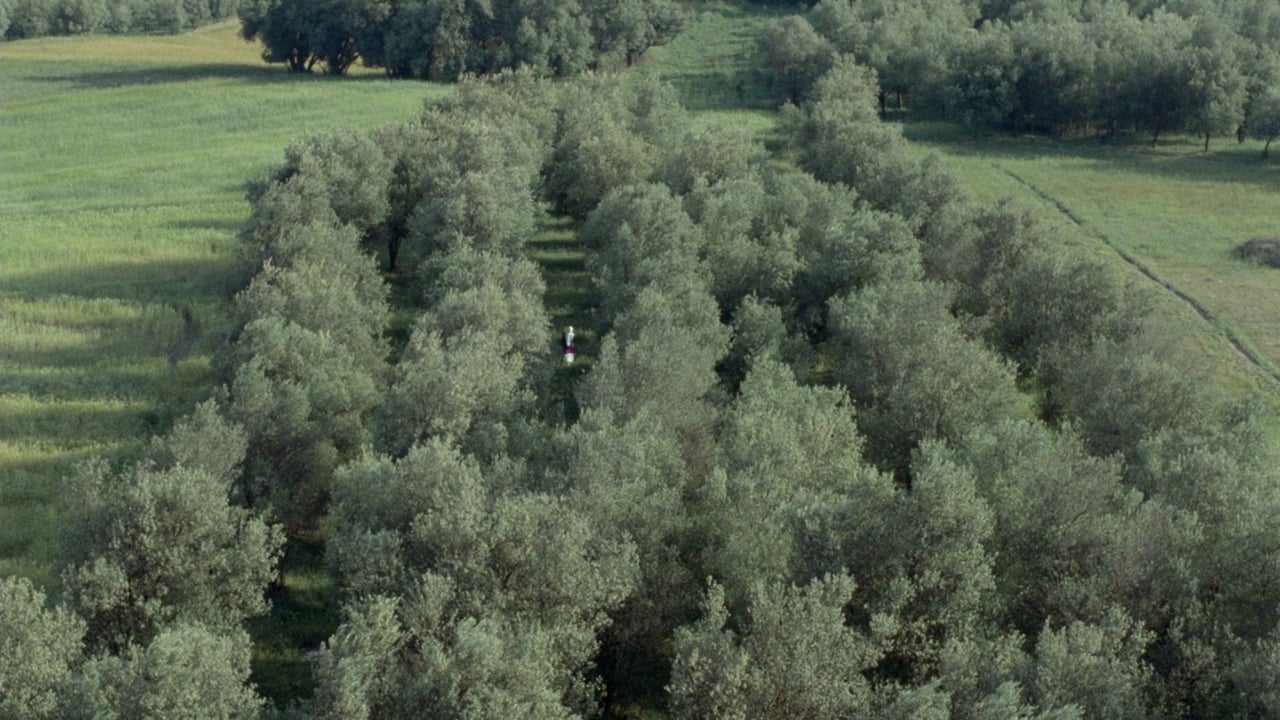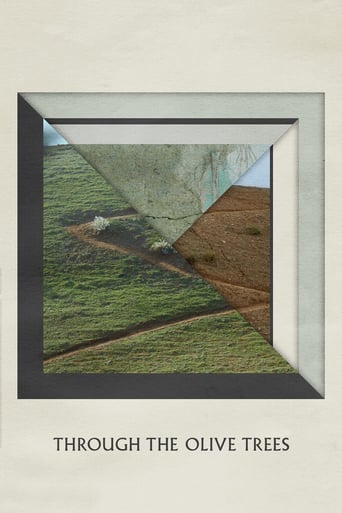

Following a film he made a few years backs, a director returns to the area where it was shot to try and find the actors who he used. The area has been hit by a large earthquake and the film is designed to help the area as well as follow up on the people. Among the cast is a young man, Hossein, who has fallen for one of the other actors and seeks to marry her but her grandmother refuses to consider any such offer; ironic perhaps, considering Hossein's character in the film is married to the very girl he loves in real life.While making the sequel (or follow up) to "Where is the friend's house?" Abbas Kiarostami met a man who told him that he was married 5 days after the devastating earthquake (50,000 dead) that is the foundation for that film. A few years later Kiarostami decided to use this man and his story as the basis for this rather intriguing film within a film. The dual plots are interesting and work well in contrast to one another to fill out a plot that is not the easiest to get excited about or really engaged by. In this regard many viewers may feel bored or distant from the material as it doesn't quite build a story that well. The "film within a film" concept is interesting but it produces many scenes that are replayed over and over (different takes) without the repeats adding a great deal in fact they seem to take away from the rhythm of the film more than give to it. As with other Kiarostami films, it is slow and requires work, but even if you are willing to put yourself into it, it is still not easy work.The characters and place are interesting and it does feel like these are over and above the material itself. The film will be of greater interest to those who have seen the other films in the trilogy as the places and people have history to them, but they are still well enough done to avoid it being key to the film. The cast do pretty well throughout; Rezai steals the show with a good performance; Ladanian is totally absent and her performance will be hard (was hard!) for a Western audience to appreciate. Keshavarz does pretty well in the role of the director.Overall this is not a film to come to unless you have seen at least one of the other two films (ideally both. It is watchable without this knowledge but even with it, it is hard work at times. The narrative is slow and not that important apparently and, although the characters and places are interesting, I did struggle to really get emotionally involved in the film. Interesting enough to be worth a look but don't expect too much from it.
... View MoreFirst thing: this is the third part in a trilogy. You really need to see "Where is the Friend's House" & "And Life Goes On" first if you want to fully understand this. In short, this is a film about a man making a film of his own journey in search of actors in a film he made earlier. Once you know that, it's not in the least slow or simple, it's a hall of mirrors, as another commentator put it. Frames within frames within frames.Second thing: Jean-Luc Godard praised Kiarostami's early films, but then felt he'd become too influenced by the international art movie tradition. I don't know if this is a film he liked or disliked, but it sure has a lot of Godard's influence in it - from the director interviewing sundry characters through the conflation of documentary and fiction elements to the use of music, it's like Godard crossed with Satyajit Ray. Not that that's a bad thing.I don't know if Kiarostami is as original or as striking as some maintain - in many ways this is "Day for Night" transplanted to the Iranian countryside - but it's very watchable, often very funny and the landscape is beautiful.There also seems to be (in the Iranian context) a subversive subtext to these films. Tradition is held up as hidebound and stupid (the adults in "Where is the Friend's House", the grandmother in this film) while the young are seen improvising their own lives and creating hope in the face of catastrophe. I can't imagine that's too popular with the mullahs, and indeed it seems that Kiarostami has been unable to get a film released in Iran in a decade.Well worth a view, and it may even inspire you to get out into the world with a digital video camera, but do see the other films (and probably also "Homework") first.
... View MoreI enjoy "art films" a lot, they usually may lack means but have great ideas behind, but this one was just poorly shot, had plenty of scenes in which nothing was happening (and then many others that were repeated again and again), it had no music, and then the last scene confirmed me that I had been completely cheated by an unskilled director (that tried to make his flaws as virtues) and by some snobbish critics.
... View MoreThrough the Olive Trees is a great example of how neo-realistic techniques can show realism in film making. One personal criticism would be the music, but that is purely personal, and takes nothing away from the film. A masterpeice.
... View More